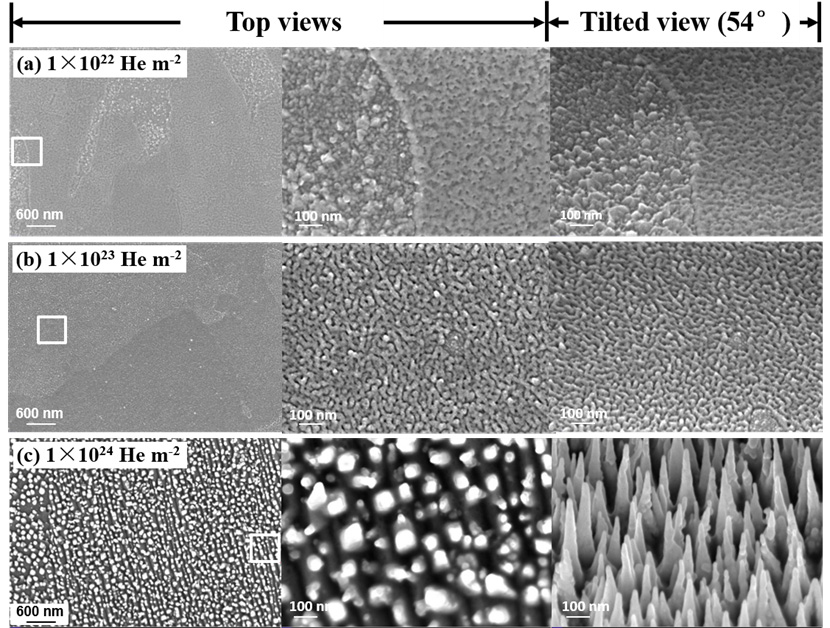
A research team from the Institute of Plasma Physics, Hefei Institutes of Physical Science (HFIPS), Chinese Academy of Sciences (CAS), revealed the mechanism of helium exposure when inhibiting the penetration of hydrogen isotopes in wall materials.
The related result was published in Nuclear Fusion.
Under the interaction between the boundary plasma of the fusion reactor and the material, deuterium and tritium will penetrate through the first wall and enter the coolant inside, increasing the fuel cost and safety risk of the fusion reactor. At the same time, the helium particles produced by the deuterium-tritium fusion reaction will also directly bombard the surface of the material, affecting the permeation and retention behavior of deuterium-tritium in the material.
In this research, scientists focused on the effect of helium plasma exposure on candidate wall materials and structural materials of fusion reactors and explored the mechanism of helium exposure to inhibit the penetration of hydrogen isotopes in wall materials.
The results showed that low-energy helium plasmas pre-exposure induced the formation of protruding nanostructures on the surface of the material. The deuterium plasma-driven permeation flux decreased gradually with the increase of helium pre-exposure fluence.
They combined the results with theoretical calculations, and concluded that the surface topography evolution and the near-surface helium bubble layer had a double reduction effect on the hydrogen isotope penetration through the material: the surface protruding structure increased the reflected flux of incident ions and reduced the implantation flux; The near-surface helium bubbles reduced the transport channels for the inward diffusion of hydrogen isotope atoms, and further reduced the steady-state permeation flux of hydrogen isotopes.
The above results were based on the previous studies on the hydrogen isotope permeation of wall materials and structural materials, and realized the quantitative analysis of the effect of helium exposure fluence, which could support the evaluation of tritium permeation in the first wall of fusion reactors.
This work was funded by the National Magnetic Confinement Fusion Energy Development Research Project, the National Natural Science Foundation of China, the Youth Innovation Promotion Association of the Chinese Academy of Sciences, and the Fund of the Institute of Plasma Physics.

Figure 1. (a) Transient penetration curves and (b) steady-state penetration (Image by WANG Lu)

Figure 2. Surface morphologies of samples with different He plasma exposure fluence (Image by WANG Lu)